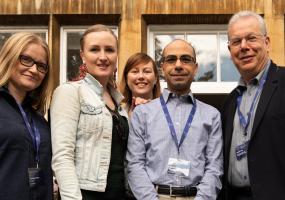Marginal on the Map: Hidden wars and hidden media in northeast India
13 Jan 2012
Arijit Sen, an Indian television journalist working for CNN-IBN, has written a provocative study on the media coverage of the various conflicts in the north-eastern region of his country which is designed to explain and challenge the lack of reporting of the area.In his research paper, 'Marginal on the Map: Hidden Wars and Hidden Media in Northeast India', Arijit exposes what he calls 'the veil of selective silence' by the mainstream, urban-based media. In a powerful indictment, Arijit writes that: often, the coverage of the Northeast remains trapped in stereotypes. With its conflicts, its tribes and its underdevelopment, this is India's area of darkness, an area of little interest to the media and to those responsible for governance and more generally in the greater cultural space of the country. In metropolitan India, the dominant image of the Northeast still remains that of a wild frontier. To illustrate his case, Arijit points to the sharp difference in the amount of coverage given to the conflict in Kashmir (a lot) compared to the various conflicts in the North East (sporadic). This is surprising when a larger number of civilians have been killed in the North East (1,772) than in Kashmir (1,139) in the last five years (2005-January 2011). So what explains the lack of interest? Mostly the tyranny of access under the guise of tyranny of distance, Arijit argues. He says social media may help in the long-term, but the complexities of the region mean citizen journalists are faced with a difficult task. He writes that 'In the course of my travels in the Northeast, several people, especially in Manipur, spoke against the idea of citizen reporters. Their big concern is that there are sharp ethnic and political lines that could turn it into loose-cannon journalism.' Airjit has several years' experience reporting from the region, and his main recommendation to improve coverage is for media workshops to take place that train reporters or encourage them to travel and report the conflicts in the North East. He also argues in favour of a strong local journalists' body that extends support to underpaid journalists, and looks into their working conditions.




